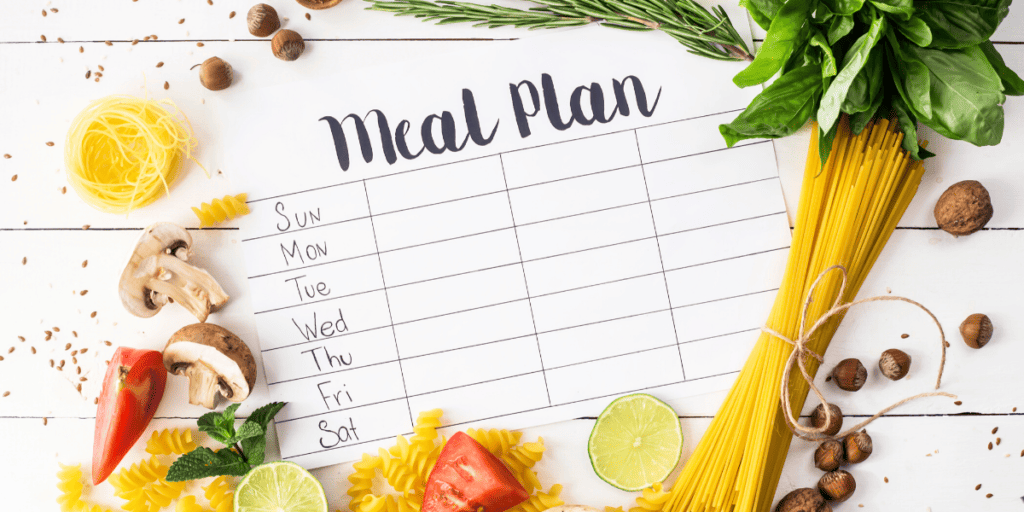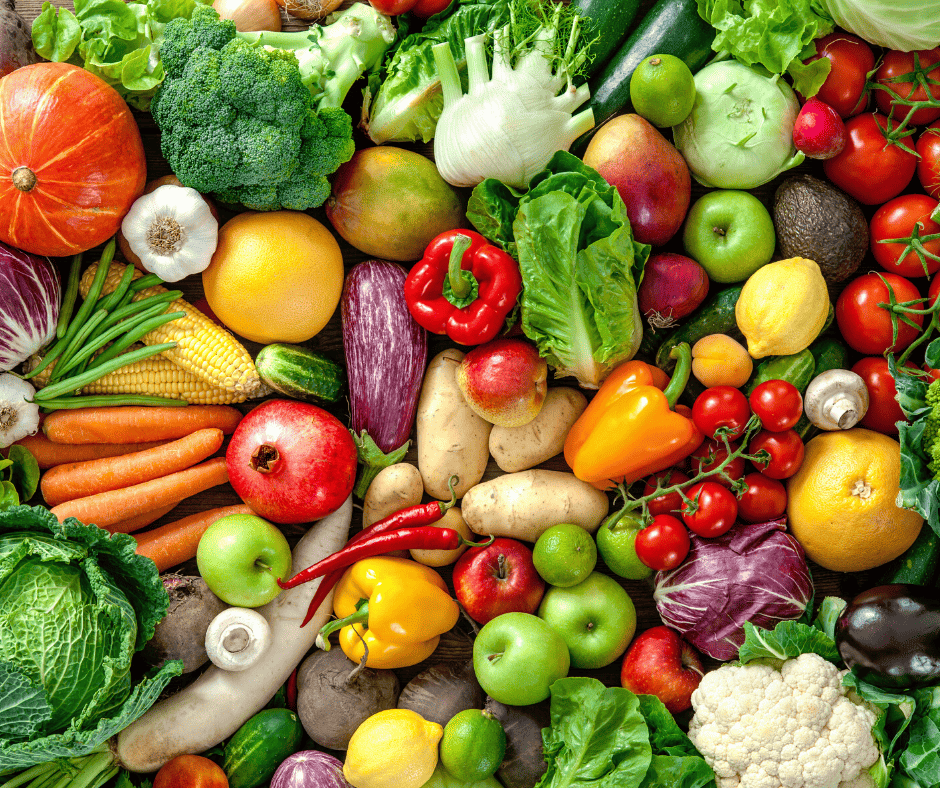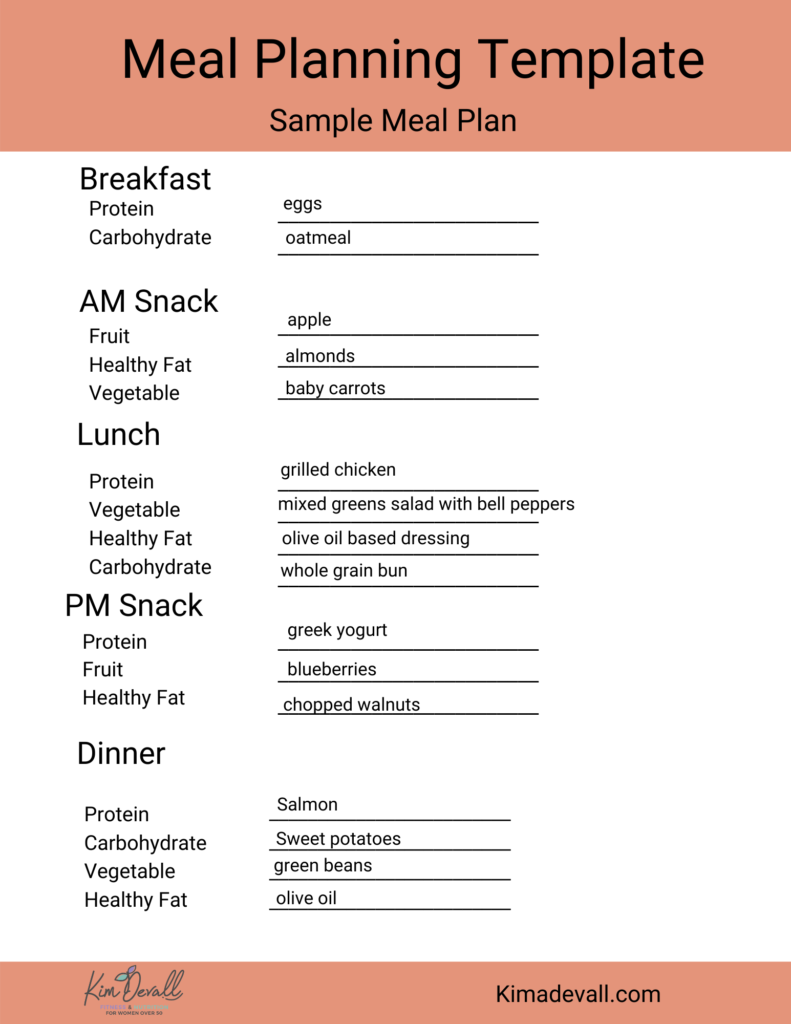- Post author:Kim Devall
- Post published:June 14, 2020
- Post comments:4 Comments

In this post, I will share my tips for basic meal planning with foods you actually want to eat. We don’t all have the same reason for wanting to meal plan. Some common reasons are:
- avoid the stress of that last minute decsion of “what’s for dinner?”
- plan healthier meals to support health and/or fitness goals
- allow for meal prepping in advance
- save time running to the grocery several times a week
- reduce the number of meals eaten out
This is just a start of the potential reasons you may be interested in meal planning.
I’ll be sharing many of my tips and some general guidelines for getting started with basic meal planning. For even more info, grab my FREE Step-by-Step-Guide to Meal Planning with Macros.
It’s important to realize, no one plan is perfect for everyone. Take what works for you, and adjust what you need to adjust. If you have any health concerns, always consult your physician.
OK, Let’s jump in.
How many calories should be in your basic meal plan?
This is tricky enough if you’re planning meals just for you. If you’re planning for a family, you’ll need to consider that everyone probably has different calorie needs. For this post, we’ll focus on creating a meal plan with one person in mind, You.
There are tons of calorie calculators available online. They will all give you a different answer. It doesn’t really matter.
I know that doesn’t make sense, but hear me out. You just need a starting point and you’ll be adjusting as you learn what works for your body.
If you are anything like me, you want a calculation to get you started. The Mayo Clinic Calorie Calculator is a great one. Super simple to use. Click the button below to get an estimate of the calories you need to maintain your current weight.
How do you determine what foods to put in your meal plan?
Now that you know how many calories you’re going to use for your basic meal planning, you’ll want to pick the foods you like and actually want to eat.
Sound good so far?
In order to keep it super simple, pick 3- 4 foods from each food group below. You’ll find a list of options for each food group here.
Protein

Carbohydrates

Fruit

Vegetables

You’ll also want to pick some healthy fats. These are foods like avocado, extra-virgin olive oil, nuts and seeds.
Basic Meal Planning with Macronutrients
How many servings of each food group you want in your meal plan will depend on several factors:
- how many calories are you using in your meal plan
- are you wanting a specific distribution of macronutrients
- your health and fitness goals
What are macronutrients?
Creating a Basic Meal Plan
As I mentioned earlier, there is no one perfect meal plan. This is just one way to create your baseline plan. As you see what works for you, you can adjust.
As an example, let’s create a sample meal plan for Karen. She wants approximately 1700 calories in her plan and likes to eat 3 main meals with 2-3 snacks.
Karen's picks from each category
Chicken, fish, eggs, greek yogurt

Oatmeal, sweet potatoes, whole grain bread

Bananas, apples, berries,

Carrots, bell peppers, green beans, jicama

Let’s take a look at what a meal plan might look like for Karen.

Using foods Karen likes to eat, I filled in the template with those foods. This meal plan comes out to appoximately 1600 calories, giving Karen a little wiggle room if she’d like to have an extra snack.
This is a starting place, you can move foods around between meals to suit your preferences. Increase portion sizes, add in a low-calorie dessert or another snack to increase calories.
Play with it. Adding in recipes with lots of ingredients adds a layer of complexity. If you’re just starting, try to avoid fancy recipes and keep it simple.
How do you know the calories and macros of the foods in your meal plan?
If you haven’t grabbed my Step-by-Step Guide to Meal Planning with Macros, you can do it now. Just click the button below. It’s completely free.
Pin it now. Read later.


